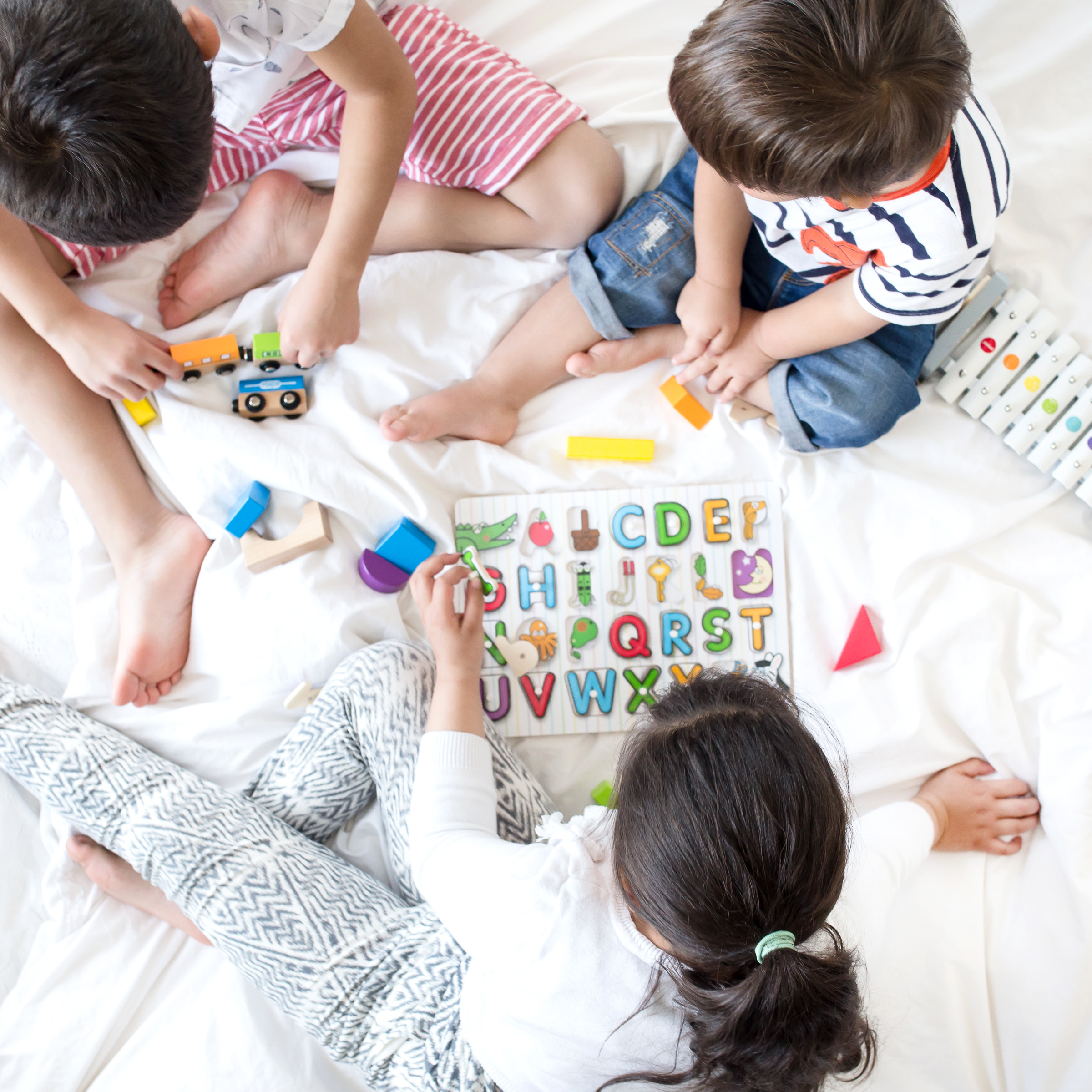After the crazy year we’ve all endured, this topic is definitely needed! Let’s jump right into these tips on how to make our children more independent. These tips will be applicable for children of any age, but I’m primarily focusing on younger-aged children.
Tip #1: Redirect not Remind
Parents have a hard time with this one because we’re innately wired to remind our children. Don’t forget your shoes! Don’t forget your water bottle! We think we’re helping them by reminding them, but we’re teaching them that we’re always going fix their problems.
To avoid reminding them, I recommend pointing them to a checklist or a list of expectations. Redirect them to something that will start teaching them how to be responsible. Create a checklist with your kids, either with pictures (for younger kids), or with words (for older kids). Make it fun and make it something that they can be a part of.
I actually have a checklist template that you can download and can make changes to fit your family’s needs. It’s a really great way to lay out everything for your kids. I recommend printing multiple copies and pasting them in various rooms around the house.
Another thing that I want to mention is to ask open ended questions. So things like, what is next on your checklist? What are you missing on your body before we go outside? Give them the opportunity to think about the question and then actually respond instead of telling them exactly what to do. This helps to foster their independence, and now they must come up with their own ideas of what they’re supposed to be doing.
Tip #2 Facilitating Independent Time
This can be applied to any age because you want to start to give your child a time that they play by themselves. They’re probably so used to playing with their siblings a lot, or they’re used to coming home from school and watching TV. This teaches their brain that they will always have something or someone else to entertain them. What we want to do is to start teaching them how to entertain themselves. For example, if you have a young child who has stopped napping, you could replace their nap time with quiet time.
This has personally worked for me with my daughter as I wanted her independent time to be the equivalent of her nap time. Your kids may not be able to sit independently by themselves for an hour or two right away, and you will have to gradually ease them into this new routine. Start with small chunks of time (15 minutes) and then slowly and gradually increase the time until they can be in their room for an hour and a half to two hours.
Think about this independent time as being a time where they can start to dabble with what they’re interested in. Allow your kids to have a say in what they do during this independent time. You could even create a special box that they can only take out during independent play – a box they helped to put together.
I tell mamas that are part of the Collective that they can still facilitate independent play when they’re in the same room with their child. It doesn’t necessarily mean that they are by themselves, but that they are in a corner in your office and they have their own desk that they play at while you’re working.
It’s really important to set expectations for our children and tell them it’s okay if they need us. The more we can detach ourselves and the more we can give them their own independence, the better.
If we’re talking about teenagers now, in regards to facilitating independence, this could be giving your children a list of expectations. So for example, if you want the privilege of having a cell phone, this is what you have to contribute to the family. If you want the privilege of living in my house rent free, these are the things that you do to pay your rent, so to speak.
Another aspect I want to bring to your attention is sibling bonding and teaching your children how to create a team environment. Encourage your kids to bond with their siblings instead of playing separately as this teaches them how to love and care for each other and actually look out for one another.
Tip # 3: Release Control
And the third and final tip I have for you guys today about fostering independence in your children is to release control and let your kids make mistakes. I know this one might be the hardest one of the three! It’s important to allow your kids to make mistakes within the comfort of your home. With your guidance you can teach them and show them a different/better way to address situations. Not necessarily show them everything right, but just to facilitate learning for themselves. This helps them to feel empowered and have a sense of control.
I also think it’s so important to let your kids get messy! I talk to so many moms who are shocked that I let my kids do Play-Doh, glitter and paint. Giving children the freedom to do things they want to do (within reason) creates very resilient and emotionally intelligent children.
I’ve spoken about this in one of my podcast episodes (Ep 12. 5 Tips for Working with Kids at Home), and I feel led to remind you that we need to learn how to say ‘yes’ more often. I think ‘no’ has become such a blanket word for parents. It’s so watered down that our kids just expect us to say no. They may not even bother to ask us anything because they know we’re going to say no. Then maybe they’re going to sneak around and do it anyways.
Think about how to turn your script around. Even if the answer is no, how can you not say no and make it positive? Maybe say something like, wow, that is such cool idea! It would be a really good time to do that at X, Y, Z.
This empowers your children to know that this might not be a good time right now. I taught my children to ask that question, “Mom, when is a good time to play with Play-Doh or paint?” We want to empower our children to do what they want to do, but within reason and within boundaries.
Recap
I hope you’ve found this information helpful. Just to recap the tips I’ve shared:
- Start ditching the reminding and instead start redirecting.
- Facilitating independent play and sibling bonding.
- Release control and say yes, as often as you possibly can.
I’m leaving you with four questions to ponder to really get a good picture of how you can start to implement these tips.
- What blocks of time during the day do my kids play independently?
- What are some things that my kids are ready to do by themselves?
- In what areas can I release control so that my kids can have more independence?
- Do I need to change anything to create a safer environment in which they can be independent?
All right, mama, I hope that you have enjoyed today’s post. I would love for you to share this with other mamas and follow me on Instagram @thepurposegathering. Let me know what your biggest takeaway was from the post.
As always mama, I am here rooting for you and you are not alone on this journey.

Resources:
- Join our Facebook Community
- Find me on Instagram: @thepurposegathering
- Website: thepurposegathering.com
- Free Checklist Template
- Episode 12: 5 Tips for Working with Kids at Home

+ show Comments
- Hide Comments
add a comment